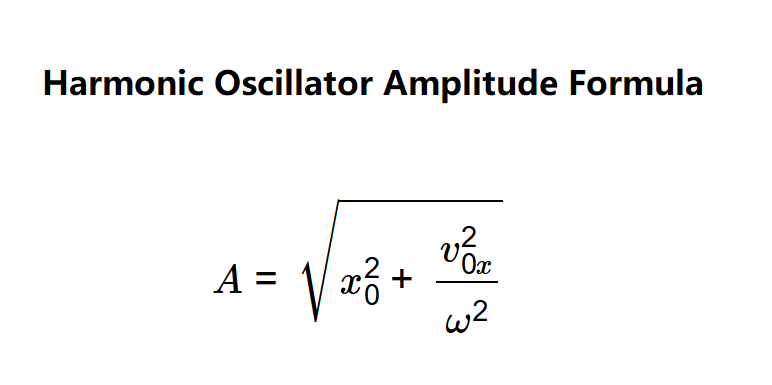 Home
Home
 Back
Back

Definition: This calculator computes the amplitude (\( A \)) of a harmonic oscillator based on its initial displacement (\( x_0 \)), initial velocity (\( v_{0x} \)), and angular velocity (\( \omega \)).
Purpose: It is used in physics to determine the maximum displacement of an oscillating system, applicable in mechanics, wave motion, and systems like springs or pendulums.
The calculator uses the relationship:
Where:
Explanation: Enter the initial displacement, initial velocity, and angular velocity in the chosen units, and the calculator computes the amplitude. Results are displayed with 5 decimal places, using scientific notation if the value exceeds 100,000 or is less than 0.0001. For default inputs (\( x_0 = 0.1 \, \text{m} \), \( v_{0x} = 0.2 \, \text{m/s} \), \( \omega = 2 \, \text{rad/s} \)), the calculated amplitude \( A \) is approximately 0.14142 meters.
Details: Calculating the amplitude of a harmonic oscillator is essential for understanding the behavior of oscillating systems, such as in mechanical vibrations, electrical circuits, and wave mechanics, aiding in system design and analysis.
How do I find the amplitude of a harmonic oscillator?
Measure the initial displacement in meters, the initial velocity in meters/second, and the angular velocity in radians/second. Compute the amplitude using the formula \( A = \sqrt{x_0^2 + \frac{v_{0x}^2}{\omega^2}} \). You will then have the amplitude in meters.
How can I find angular velocity with amplitude and other parameters?
Measure the amplitude in meters, initial displacement in meters, and initial velocity in meters/second. Use the equation \( A = \sqrt{x_0^2 + \frac{v_{0x}^2}{\omega^2}} \) and solve for \( \omega \): \( \omega = \sqrt{\frac{v_{0x}^2}{A^2 - x_0^2}} \), ensuring \( A^2 > x_0^2 \).
What is the formula for the amplitude of a harmonic oscillator?
The formula for the amplitude of a harmonic oscillator is \( A = \sqrt{x_0^2 + \frac{v_{0x}^2}{\omega^2}} \), where \( A \) is the amplitude, \( x_0 \) is the initial displacement, \( v_{0x} \) is the initial velocity, and \( \omega \) is the angular velocity. The standard unit for amplitude is meters (m).